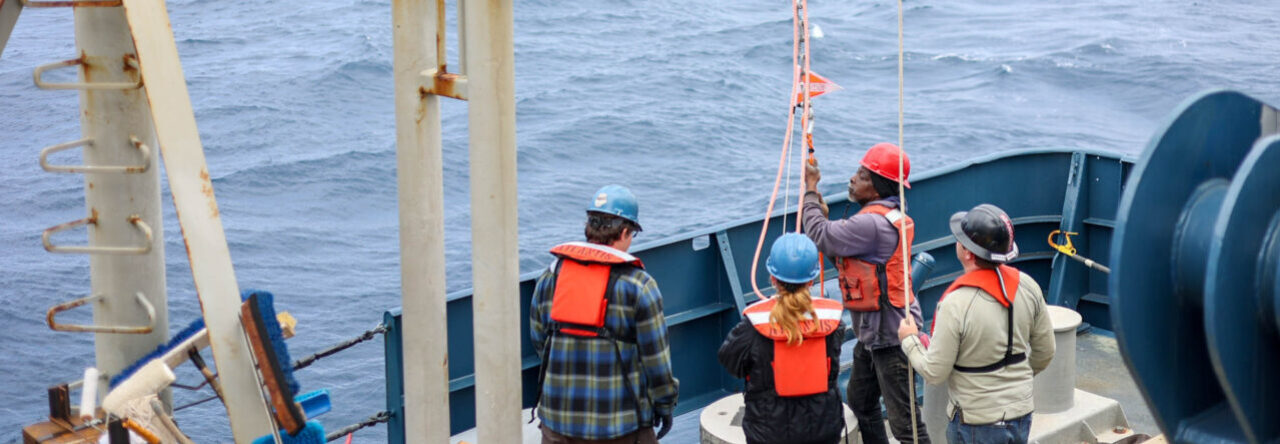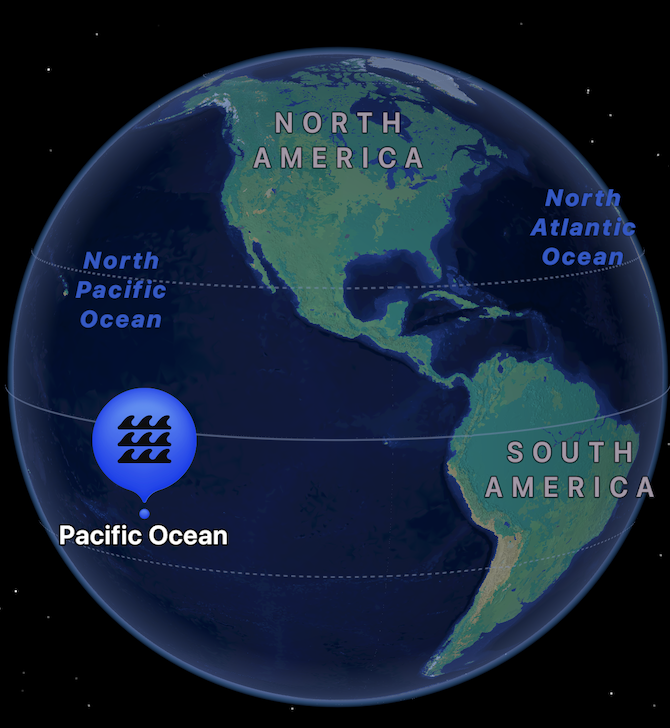
– General idea of where the R/V Kilo Moana is currently in the Pacific ocean
We arrived at our first long station on Nov 2nd around 3 pm and arrived at our second long station on Nov 6th. The long stations are the meat and potatoes of the Ocean Carbon biological cruise as that is where scientists will be performing incubations, collecting water from depth, and conducting in situ experiments using arrays. Each long station is a 60-hour sampling storm with Conductivity Temperature and Depth (CTD) profiles taking place every 3 hours, sediment traps, primary productivity arrays, float deployments, and more!
Immediately upon arriving at each long stratton, we deploy one of Dr. Henderikx’s floats. This float will be released into the water for the rest of its life where it will be conducting CTD profiles of the water column a couple times a day and then relaying that information to a satellite at least twice a month. This information will then be used to calibrate data collected from satellites hovering on Earth to what is happening in the water column.
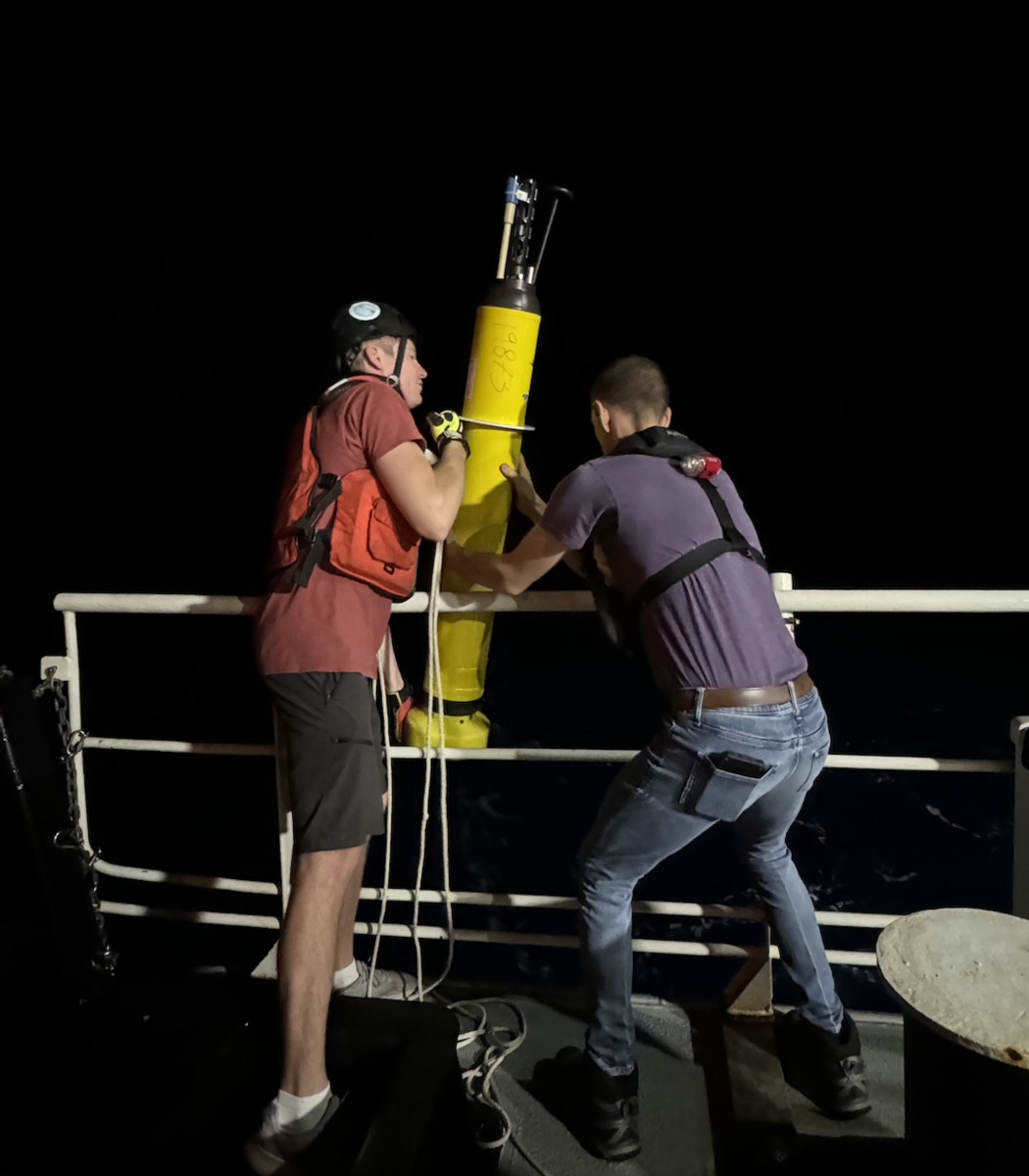
– Dr. Daniel Muratore and Tully Rohrer Deploying a Float upon arriving to a long station
The second and third orders of business are to deploy sediment traps and the wirewalker to collect the most data while we are at the station. Unlike the float, these will be retrieved at the end of the long station. To make our delicate samples and wirewalker visible and retrievable, we attach the samples to buoys that are bright yellow and have flashing lights, GPS, and a radio transmitter on them. The buoy is also connected to a string of floats that help counteract the weight of the samples, optodes, and weight at the end of the line.
The sediment traps contain two sets of traps, one for trace metal analysis that uses brine as its trapping material and the other for overall organic matter exports outside of the photic zone that uses formaldehyde to preserve the samples. These traps are placed at a depth of about 150 meters, right under the photic zone and its goal is to trap as many of the particles that sink out of the surface. Most often it tends to be dying phytoplankton or bits and pieces of things that get stuck together and it represents carbon exiting the photic zone and beginning its slow descent into the bottom of the ocean…
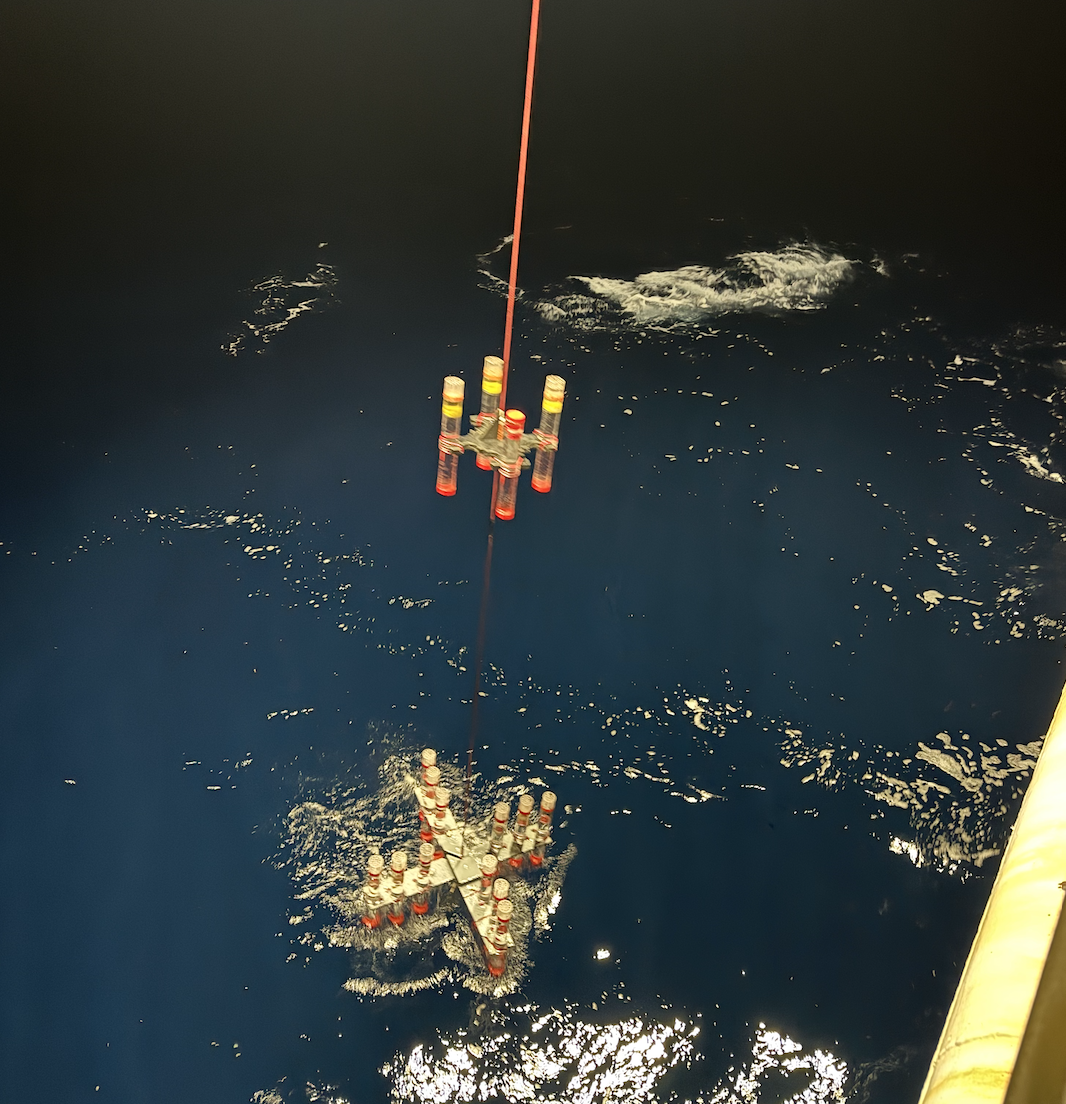
– Deploying Sediment traps into the water. Top are trace metal clean sediment traps filled with brine. The bottom set of sediment traps are filled with formalyn to preserve particulates that have fallen in.
The third order of business is the wirewalker. The wirewalker is like a float in that it takes CTD profiles; however, it is attached to a buoy and it can take over 70 water column profiles a day. It utilizes wave energy and can be described as a pong brick moving up and down the wire up to depths of 400 meters in less than 30 minutes. This is an important instrument as it provides the oceanographic context to which we are sampling over the 60 hours.
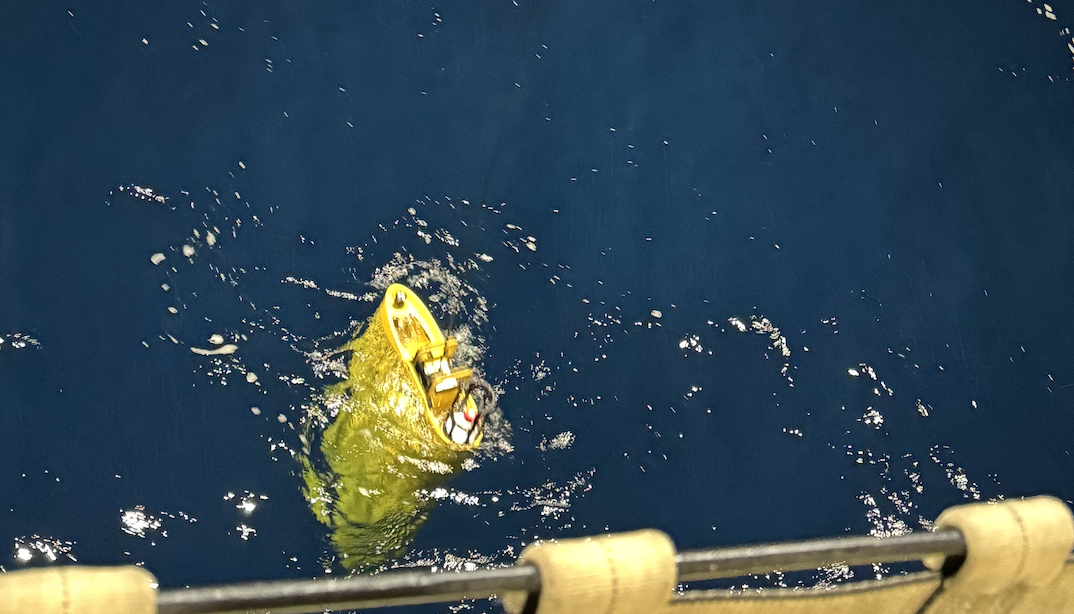
– Wire walker being deployed into the water
Once those are all deployed we can finally deploy the CTD rosette to start collecting water and generating a water column profile and the scientist can start doing their water incubations for upcoming experiments. There is an assortment of things that the science team samples for. Sometimes the team takes water to sample oxygen concentrations and particulate organic carbon. This cast is used to calibrate the oxygen sensor on the CTD. Then there is another cast where the scientist takes water to measure chlorophyll and uses the results of that to calibrate instrumentation.
My favorite cast is the Primary Productivity and Gas Array (PP Array). This cast is for collecting samples that will be used to test the rate of Nitrogen Fixation using N15, dissolved inorganic carbon consumption using C14 and oxygen production using O18.
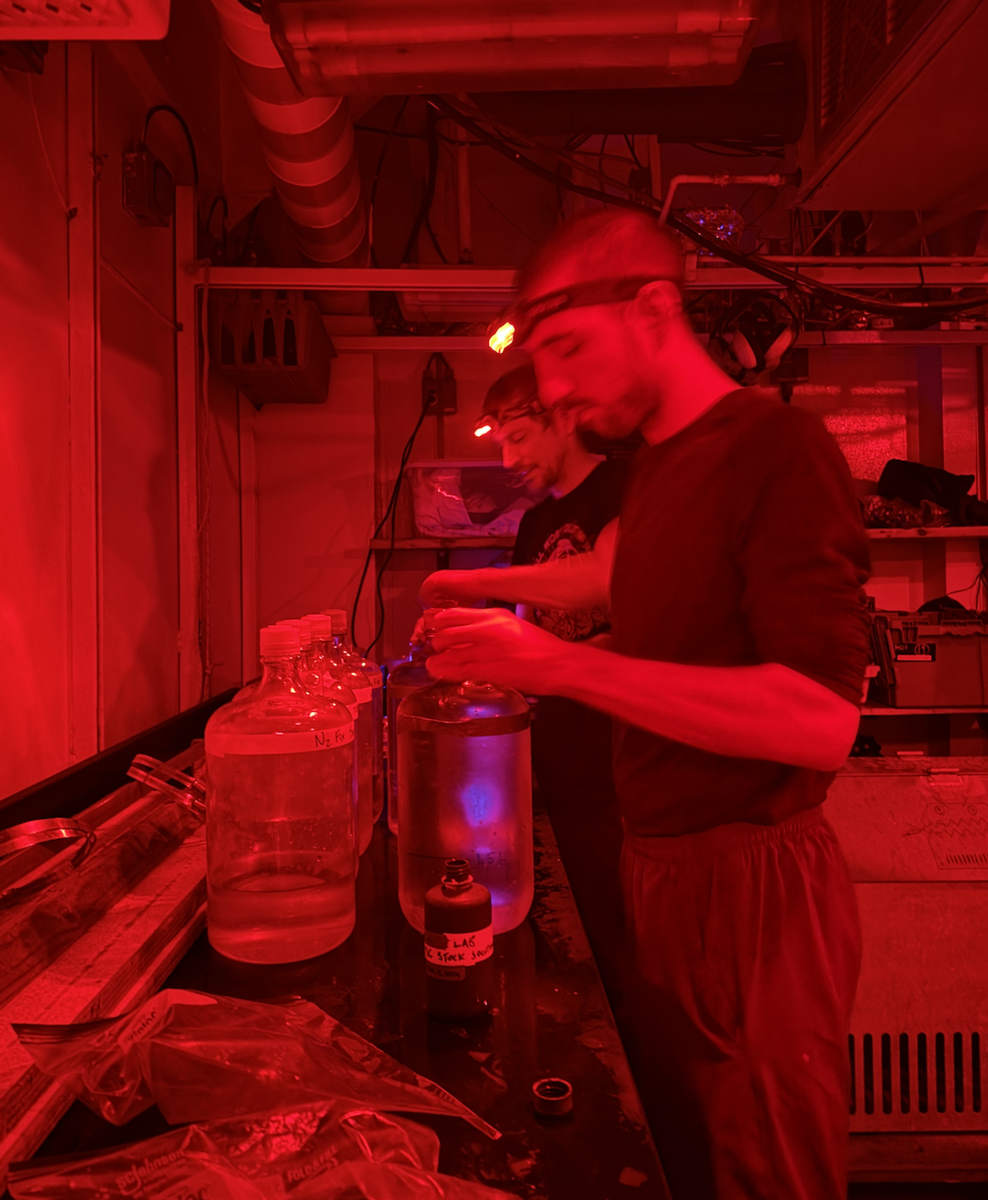
– Dr. Daniel Muratore and Tully Rohrer spiking their incubations with N15 in preparation for the insitu PP/Gas Array deployment
During the CTD cast we “fire” bottles at 6 specific depths; 125m, 100m, 75m, 50m 25m, and 5m. These samples will then be placed back into the water at their respective depths, where they will sit in the water column for 24 hours replicating conditions that they were collected in. This cast always takes place at least 3 hours before sunrise, approximately ~1am in our current location. The CTD samples are typically back on deck 30 minutes later and then put back in the water hopefully no later than 3 am – which is about when the sun is starting to rise in our current part of the world. It’s a bit of a scramble to get everything spiked with N15, C14 and O18 respectively before the samples are supposed to be in the water but it sure is exciting. While deploying this specific array, all lights have to be turned off and only red lights are allowed to prevent the phytoplankton from photosynthesizing too early, which adds to vibe ~
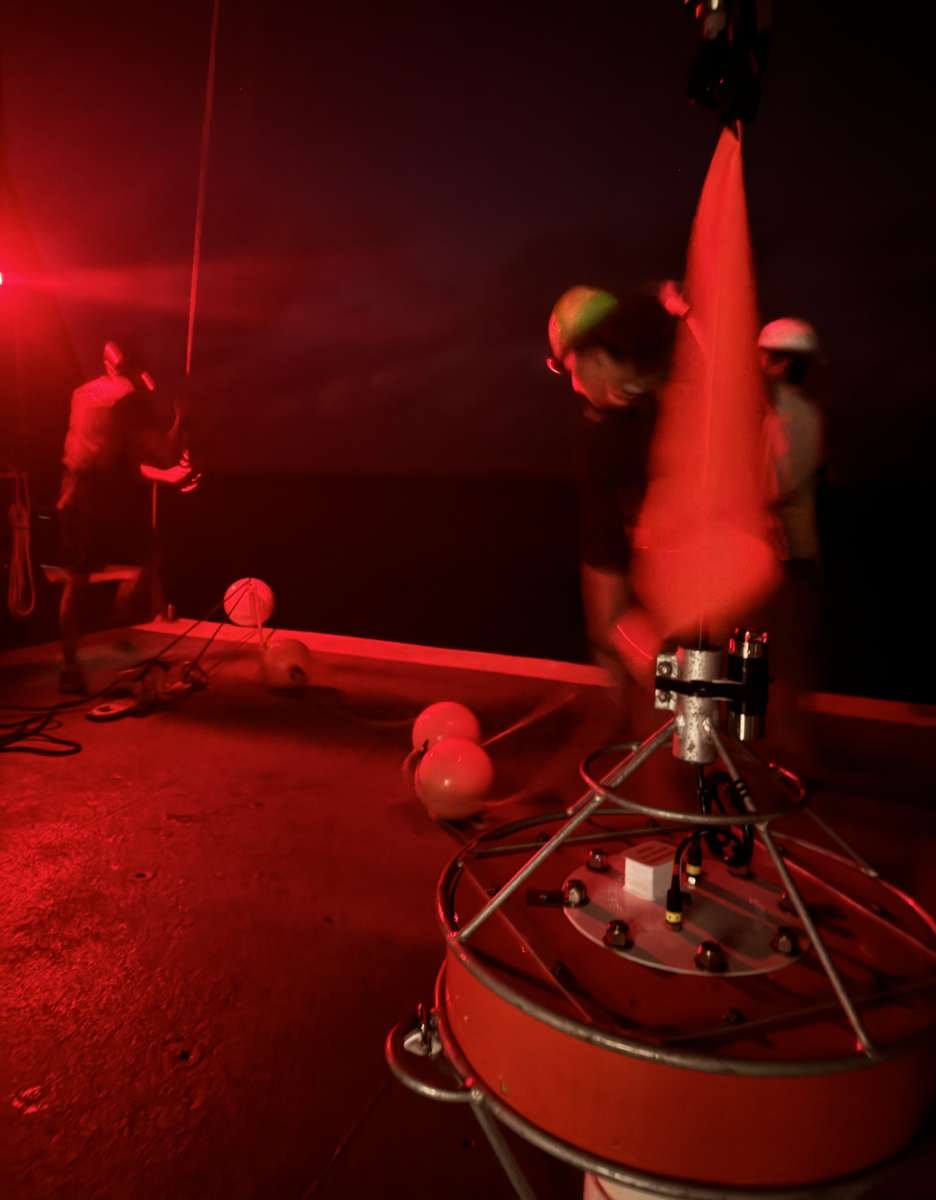
– Primary Productivity and Gas Array being deployed at 3am using red lights
This ALSO provides the perfect opportunity to get a peak of the milky way and stars. There are definitly more stars in one corner of the sky than there were in the whole sky where I grew up in suburban San Diego. It take my breath away every-time!
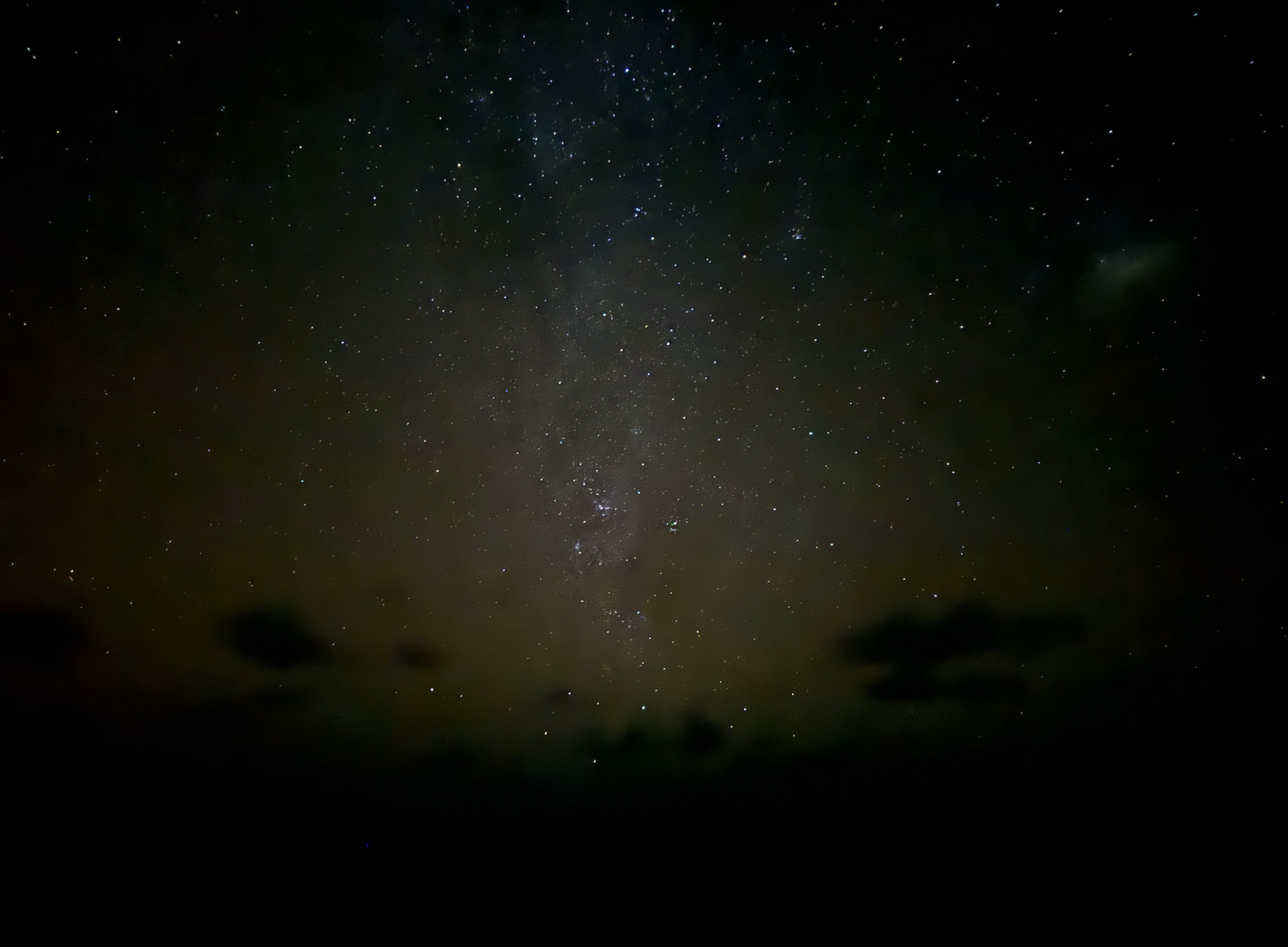
This week I also celebrated my birthday! The galley staff were really kind and baked me a cake! It was delicious!
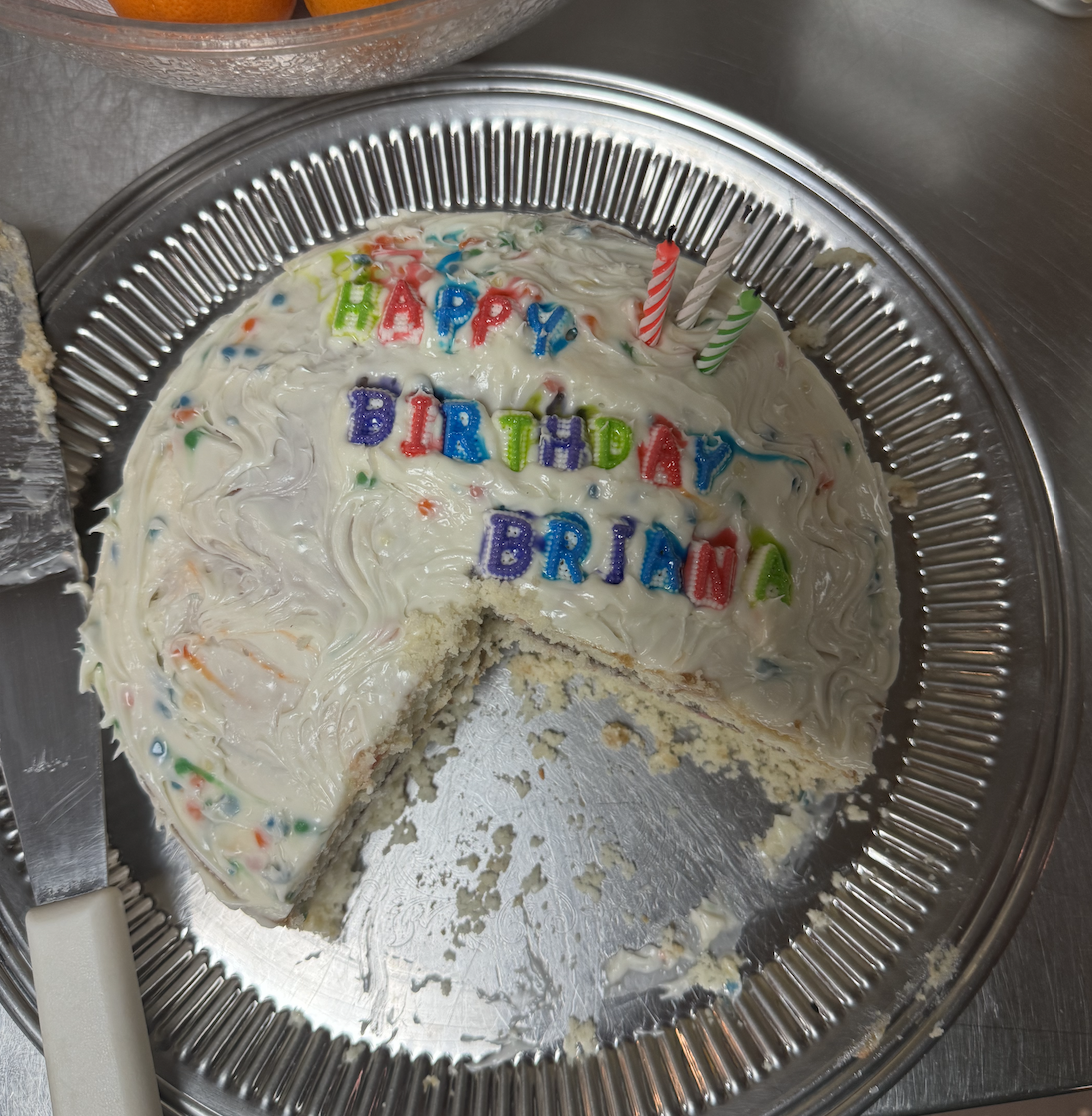
Cheers,
Briana

